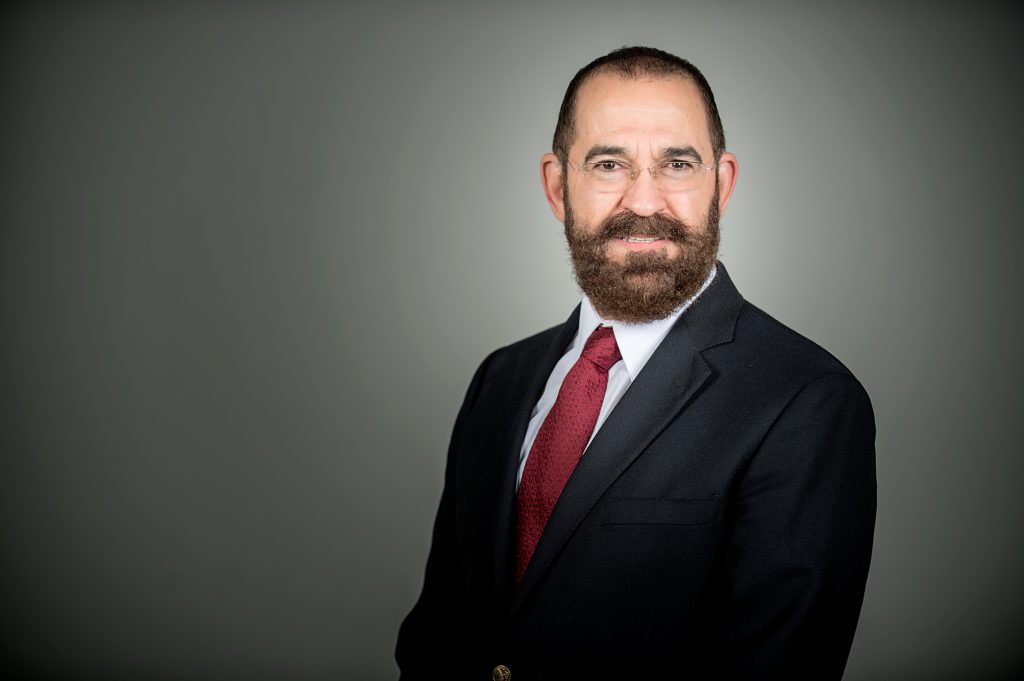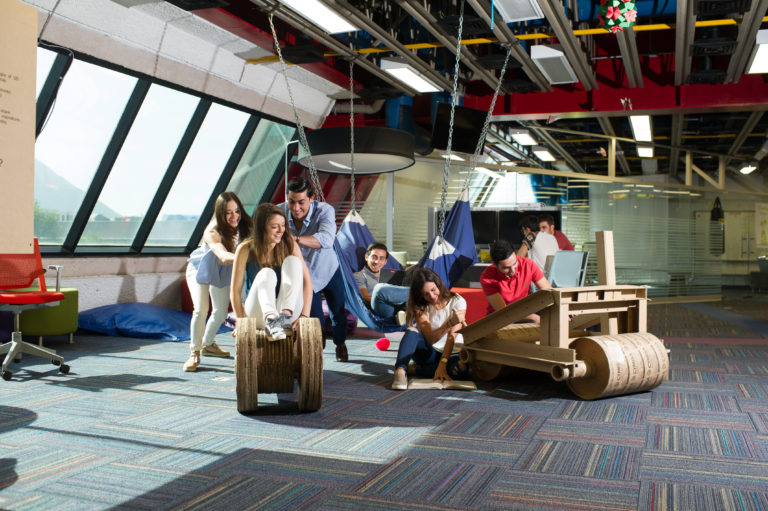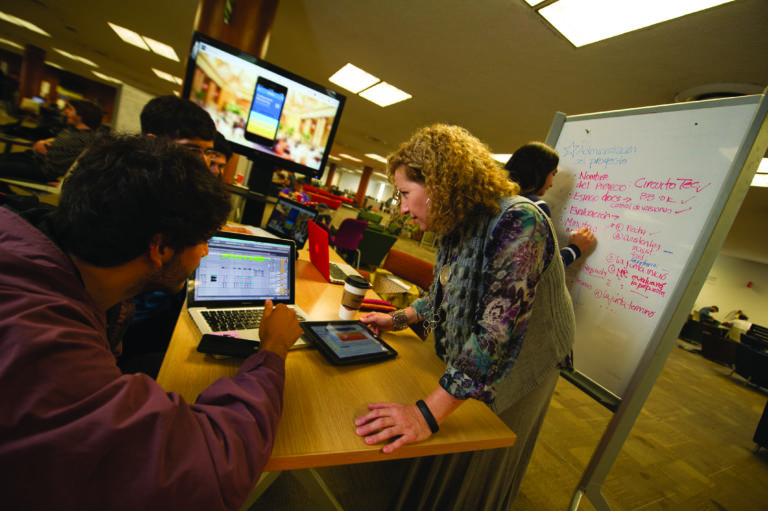What?
Creating the conditions for innovation and real world learning in higher education.
Who?
José Escamilla, Director of TecLabs – Learning Reimagined, Tecnológico de Monterrey University.
Where?
Mexico.
The pioneer
José Escamilla is the director of TecLabs – Learning Reimagined, a disruptive innovation unit at Tecnológico de Monterrey University whose objective is finding out how higher education will be in 2030.
He has expertise in how technologies are used in education, artificial intelligence in education and other educational innovation projects. He holds a Ph.D. in Artificial Intelligence from Institut Polytechnique de Grenoble.

“We expose students to real world situations. We also make sure that they will be able to transfer their learning because that’s another real problem of the traditional classroom setting, even if students do very well in tests, they cannot transfer what they have learned in real world, complex situations.”
The Big Change
Tecnológico de Monterrey University has developed a new educational model called Tec21 that enables students to become independent, lifelong learners in their professional field.
The model enhances the competencies and ‘power’ skills (soft skills e.g. problem solving and teamwork) of students by asking them to solve real world challenges working with enterprise, government, NGOs and other students enrolled at the university.
Challenges are defined by faculty staff and contain learning modules related to the specific challenge. Challenges take place for one week ‘Week I’ at the start of term and for a whole semester ‘Semester I’ towards the end of the academic year. Students are assessed on the evidence of the development of disciplinary and non-disciplinary competencies.
In Tec21, learners can choose the study format they are more comfortable with for some learning modules, these include learning in a classroom, on another campus, online, collaboratively or individually.

The ambition for changes
The big vision for Tecnológico de Monterrey is: to educate leaders with entrepreneurial spirit, a humanistic outlook and who are competitive on an international scale.
This is being achieved through continuously innovating the university’s academic offer so that it always responds to social, economic, labor, scientific and technological changes.
A shift in direction
A new university model that responds to the changes, challenges and opportunities of the future.
Faculty and leadership teams at Tecnológico de Monterrey recognise that students struggle to develop the skills needed to succeed in life through a classroom setting.
Students are exposed to real world settings to evidence their skills and competencies so that they are able to transfer what they have learned beyond university.
Making change happen
1: The start point
Looking beyond the university walls
Six years ago José and his team recognised that the pace of change happening outside of the university was greater than the change happening inside. Even though the university was doing well, they realised they would have to develop a new educational model if they were to keep up. José, faculty and leadership teams visited over forty institutions around the world to act as a benchmark for Tecnológico de Monterrey. These visits inspired a new way of thinking and doing things differently for the university, and became the catalyst for defining the Tec21 model.
2: Taking off
Create the conditions for a culture of experimentation and change
When developing the model, José and his team were also successfully creating the conditions for an experimental change culture in the university. They work with faculty and leadership groups throughout the year to ask some big questions they’ve been trying to solve through pilots. Solutions are generated through group discussion and findings from pilots to ensure everyone feels involved in and connected to change within the university.
“One of the most important things I think that you have to have is buy-in from leadership and faculty for a project like this. So it’s simple to develop a model like this with every single faculty member at the same time, but you have to find a way of getting everyone involved and hear their voice. If you treat the people like intelligent people, they will arrive at comparable conclusions.”
3: Keeping going
Invest in faculty to become agents of change
For the last six years Tecnológico de Monterrey has invited faculty staff to apply for funding to run their own education innovation projects. Successful applicants receive funding of up to $25k to carry out projects over the course of a year and a half. Around 30% of faculty staff have participated in projects which range from innovative pedagogies to AI and virtual reality. Funding is essential for developing the faculty team and cultivating an innovative mindset, in addition to inspiring students to become innovators in and outside of the university.
Keeping up to date with change
“When we started this project we realised that faculty and leadership were not seeing what was happening in the world – they were not prepared for change, so we said, ‘let’s bring the world to them.”
The Observatory of Educational Innovation was launched to raise awareness of university staff on change happening in education, especially higher education, and education innovation. Weekly in depth reports are circulated to both faculty and leadership teams. Faculty reports identify and analyse high impact educational trends, while leadership reports are focussed more on management. While the reports are intended to boost and promote innovation in the university, they are made available to the public as a tool to promote and encourage the development of educational innovation in colleges and universities around the world.
Stand out from the crowd
“Many people ask me how they can start what we’re doing at Tecnológico de Monterrey. I say it’s not necessarily what we do because it depends on your context – what public do you serve, your mission, where you are based in the world – so taking into account your context, do not be afraid to be different. Most universities are very similar in what they do, and I think that part of the reason for this is because accreditations and regulations make us look very similar. Be bold in embracing those differences.”
“When we have done our full semester, ‘Semester I’ experience of challenges, one of the most difficult things has been for the students to go back to traditional classes. They love it so much, they are so engaged in working on those challenges that going back to a traditional classroom has been very difficult. That has been one of the findings I like the most.”
Taking change wider
Tecnológico de Monterrey host an annual conference for an international audience of teachers, directors and entrepreneurs…
Offering them the opportunity to learn more about the best national and international experiences, connecting them with experts and showcasing what other teachers are doing in the area of educational innovation.
“Our faculty can connect to other people, hear new ideas and learn about what’s happening outside of the university. It’s also a way for us to show people what we’re doing. It’s a fort of change.”

The impact of change
System impact
- The Observatory of Educational Innovation has over 150,000 subscribers and 365,000 followers across its newsletter and social media channels.
- 3,500 people from Tecnológico de Monterrey and around the world attended the latest annual conference.
- Number 81 in employer reputation worldwide according to the QS World University Rankings 2017-18.
Student and faculty impact
- Twenty six of Tecnológico de Monterrey’s alumni are working by themselves or have started their own enterprise during the first three years of graduation. This number grows to 60% of alumni within fifteen years of graduation.
- $1,250,000 of funding was given to 150 faculty educational innovation projects in 2018.
